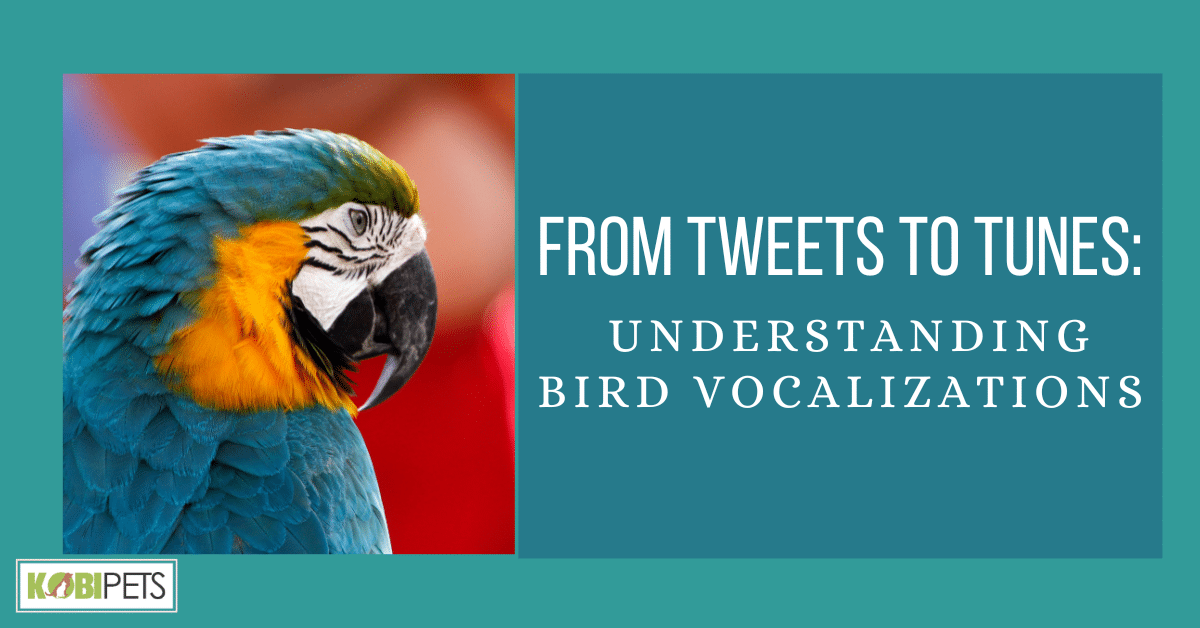
Bird vocalizations are more than just melodic tunes; they are intricate forms of communication. From chirps to complex songs, these sounds convey messages about territory, mating, and even danger. Understanding the language of birds opens a window into the natural world’s rich tapestry of interactions.
We’ll uncover the intricate world of bird vocalizations. Beyond the beauty of their songs, we’ll explore how these calls serve crucial functions in the avian realm, from marking territory to finding mates. Join us as we delve into the secrets of avian communication and the tools used by researchers to decipher this fascinating language.
The World of Bird Vocalizations
Bird vocalizations, encompassing a wide range of sounds produced by birds for communication, attracting mates, territorial defense, and various other purposes, constitute a captivating aspect of avian behavior. These sounds take the form of songs, calls, and even non-vocal expressions like rhythmic drumming or distinctive wingbeats.
Understanding the mechanics of how birds produce these sounds involves exploring the syrinx, vocal muscles, and air pressure control. This knowledge unveils the intricate machinery behind avian vocalizations, setting the stage for a deeper appreciation of bird communication.
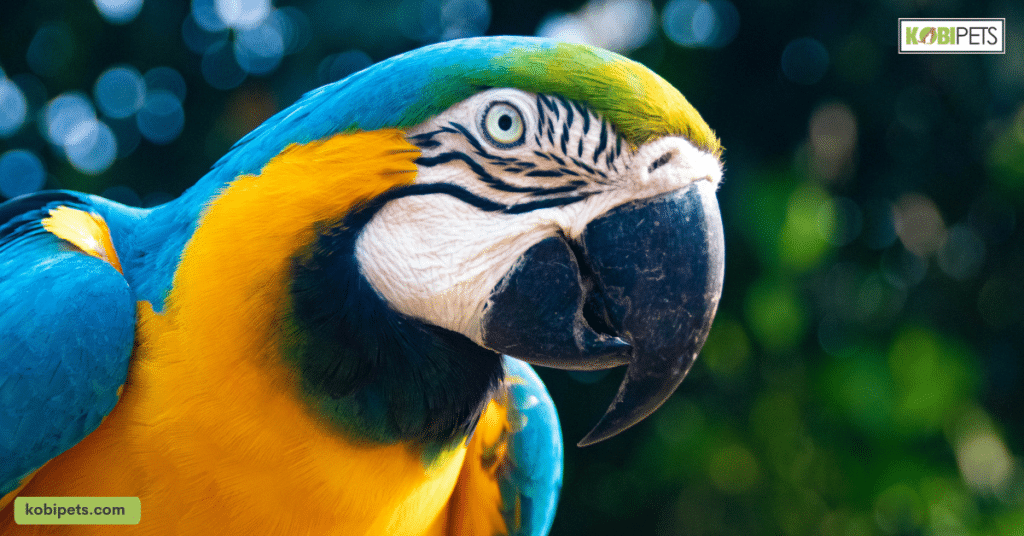
Functions of Bird Vocalizations
Birds communicate through a rich tapestry of vocalizations, each serving a specific purpose vital to their survival and social dynamics. In this section, we will explore the multifaceted functions of bird vocalizations, highlighting how these sounds play pivotal roles in their lives. From attracting mates to defending territories and fostering social bonds, bird vocalizations are a window into the intricate world of avian behavior.
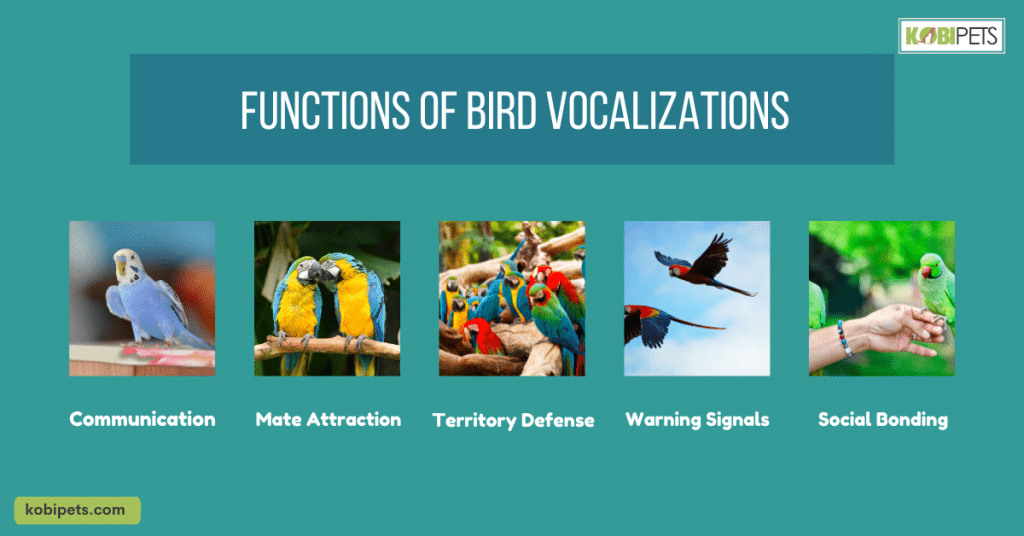
Functions of Bird Vocalizations
- Communication: Bird vocalizations serve as a versatile language that enables birds to communicate intricate messages within their species. From simple greetings that establish familiarity to more complex signals that convey information about food sources, safety, or even imminent threats, these vocal exchanges underpin the cohesion and survival of avian communities.
- Mate Attraction: Among the myriad uses of bird vocalizations, one of the most enchanting is in the realm of courtship. Many bird species employ elaborate and melodious songs and calls to entice potential mates.
- Territory Defense: Birdsong serves as a potent tool for territorial assertion and protection. Vocalizations act as audible fences, clearly demarcating boundaries and warding off potential intruders.
- Warning Signals: In the face of danger, birds become vocal sentinels for their communities. When a threat looms, they emit warning signals, alerting their peers to potential peril.
- Social Bonding: Beyond their functional roles, bird vocalizations also play a pivotal role in maintaining social bonds within avian groups. Some species use specialized calls to reinforce connections, strengthen social cohesion, and synchronize group activities.
Bird vocalizations are the threads that weave the intricate fabric of avian societies. In the next section, we will delve into the mesmerizing world of birdsong, exploring the remarkable complexities and patterns that make each species unique.
Birdsong and Language
Birdsong, a captivating facet of avian communication, provides a unique window into the world of birds. In this section, we’ll embark on a journey to explore the intriguing parallels and distinctions between birdsong and human language. While both involve intricate patterns and convey information, birdsong is distinctly non-linguistic, relying on melodies, rhythms, and pitches to convey emotions, attract mates, and establish territories.
The complexity of birdsong varies widely among species, with some renowned for their virtuosic performances, like the melodious nightingales whose songs have inspired poets and musicians for centuries. By delving into the intricacies of birdsong, we’ll uncover the remarkable diversity and beauty that underscores this form of avian expression, shedding light on the unique ways in which birds communicate and connect with their world.
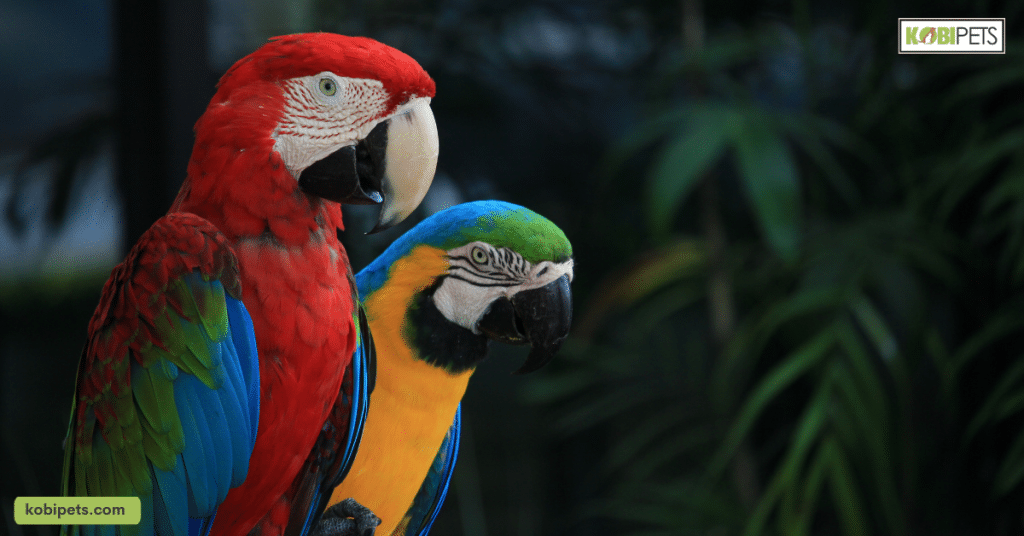
How Birds Learn to Sing
Before delving into bird vocalizations, it’s essential to grasp three fundamental concepts. We’ll explore the difference between innate and learned sounds, the role of imitation, and the significance of early exposure. These elements provide the foundation for understanding avian communication.
Innate vs. Learned Sounds
Innate sounds are those that birds are born with and can produce instinctively. They are often essential for basic survival functions.
On the other hand, learned sounds are acquired through exposure and practice, often involving imitation of sounds in the bird’s environment. Understanding this distinction is key to appreciating the complexity and adaptability of bird vocalizations.
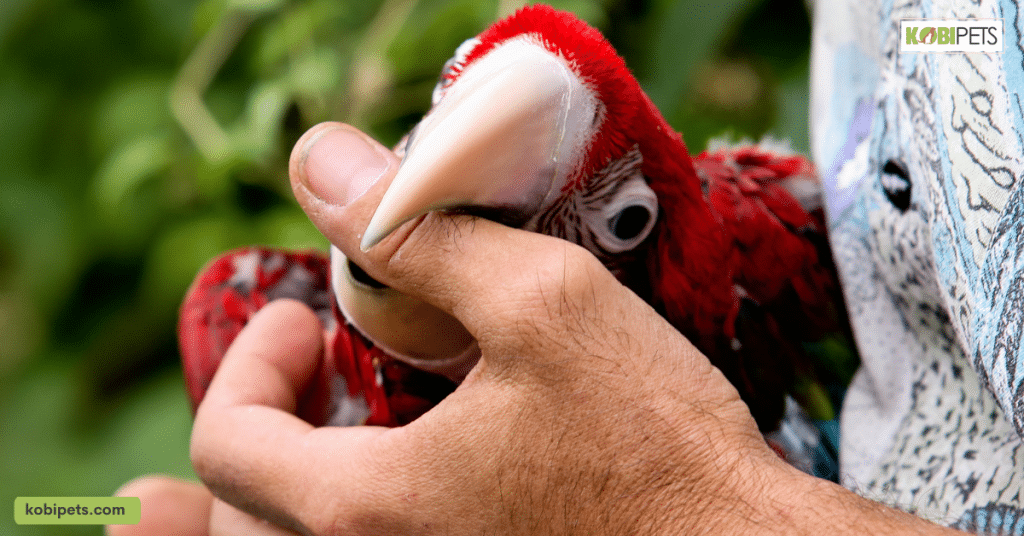
The Role of Imitation
In this part of our exploration, we delve into the intriguing world of avian mimicry. Many bird species learn their songs by imitating the sounds they hear from other birds. This process of imitation allows birds to incorporate a wide variety of sounds into their vocal repertoire, often with remarkable precision. It showcases the adaptability and versatility of birds in using vocalizations for communication, mating, and other essential purposes.
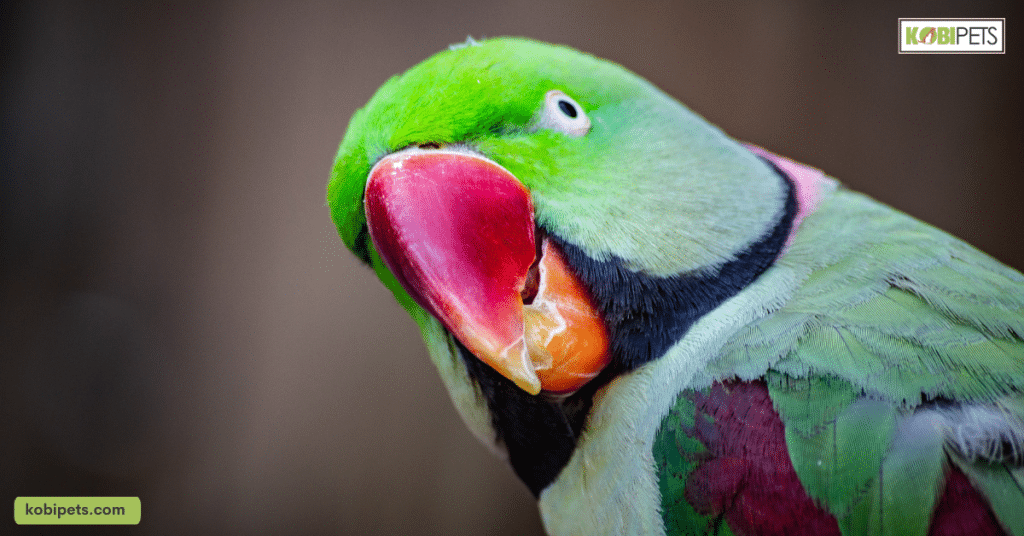
The Importance of Early Exposure
Young birds are particularly sensitive to the sounds in their environment during their developmental stages. Early exposure to specific sounds can influence the bird’s vocal development, affecting the quality and complexity of its future vocalizations. Understanding the significance of early exposure provides insights into the intricate ways in which the acoustic environment shapes a bird’s communication abilities and behavior.
With these foundational concepts in mind, we gain a deeper understanding of bird vocalization. From innate to learned sounds, the role of imitation, and the impact of early exposure, we uncover the intricate mechanisms behind avian communication. This knowledge enriches our appreciation of the melodious world of birds in nature.

Bird Vocalizations and Conservation
The melodious and distinctive songs and calls of birds aren’t just beautiful expressions of nature; they are invaluable tools for conservationists. Bird vocalizations serve as sensitive indicators of environmental health, with changes in these sounds often signaling shifts in ecosystems, such as habitat loss, pollution, or climate change. Conservationists, including citizen scientists and researchers, harness the power of these vocalizations to track and protect bird populations.
By studying the variations in bird vocalizations, experts can identify declining populations, assess the effectiveness of conservation measures, and take proactive steps to safeguard these avian treasures. Bird vocalizations, therefore, become not only a symphony of nature but also a clarion call for action, inspiring efforts to preserve the diverse and fragile ecosystems that birds inhabit.
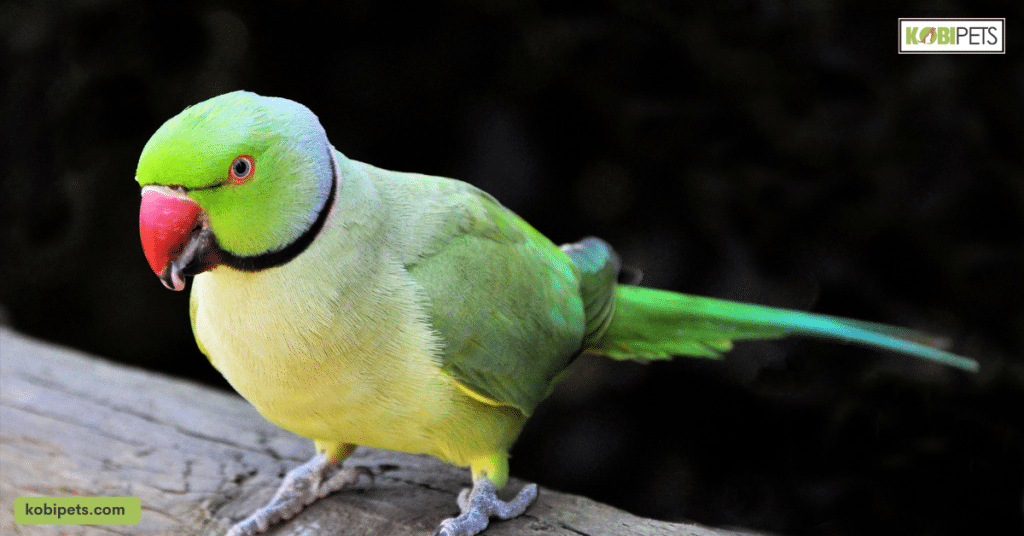
Conclusion
Our journey through “From Tweets to Tunes: Understanding Bird Vocalizations” has revealed the fascinating world of avian communication and its profound implications. We’ve explored innate and learned sounds, the role of imitation, and the significance of early exposure, gaining a deeper understanding of how birds learn to sing. Additionally, we’ve seen how bird vocalizations serve as vital conservation tools, signaling environmental changes and aiding in the protection of bird populations.






